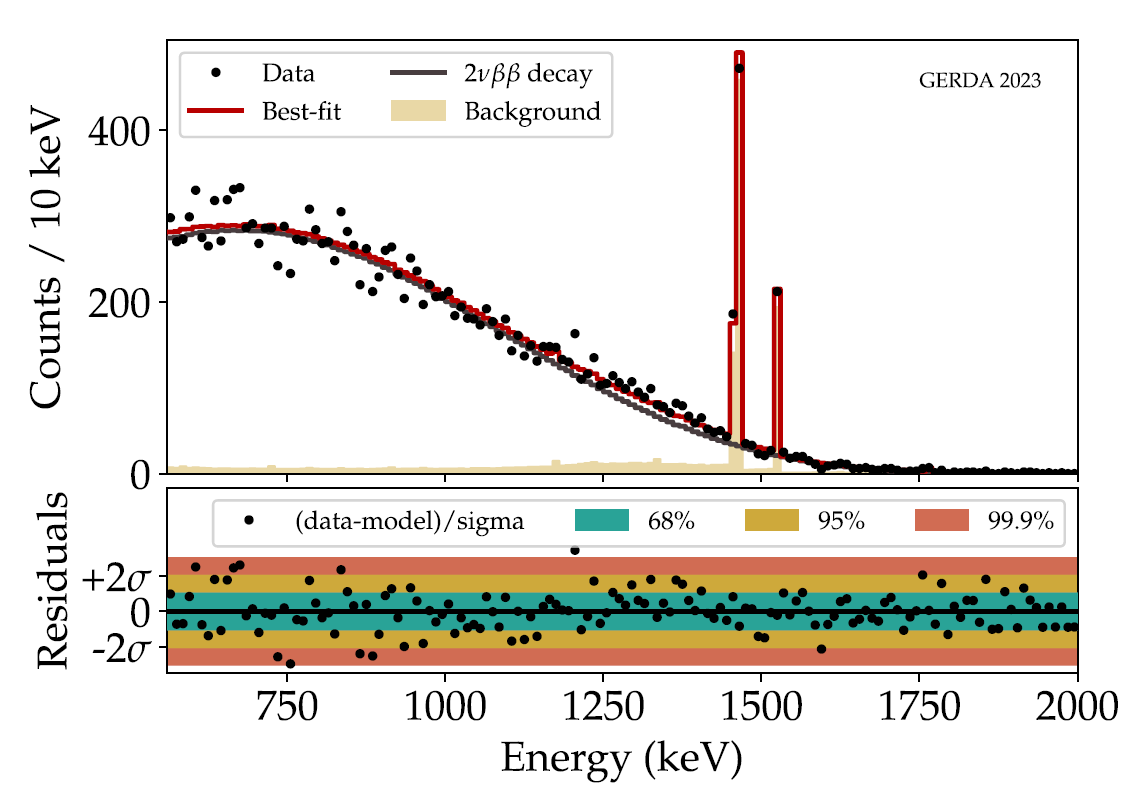Two-neutrino double-β decay half-life of Ge-76
The GERDA collaboration presented the measurement of the two-neutrino double-β (2νββ) decay rate of 76Ge performed with the GERDA Phase 2 experiment, which was published in Phys. Rev. Lett. today as editor's suggestion.

Results were drawn from data collected with nine high-purity Broad Energy Germanium detectors between December 2015 and April 2018 with a total exposure of 11.8 kg yr. These detectors were chosen over all the 37 detectors presented during the Phase 2 operation given that their active volumes could be determined to an accuracy of 1-1.5%, which ultimately determined the efficiency for detecting 2νββ decays. By operating high-purity germanium detectors in combination with a liquid argon veto system featuring excellent background-rejection capabilities, we achieve a superior signal-to-background ratio of 22:1, reducing the background by more than tenfold in the energy region dominated by the 2νββ decay. Using a binned maximum likelihood to estimate the number of 2νββ decays within the energy window of 560 and 2000 keV, we obtain a decay half-life of T1/2 = (2.022 ± 0.018 stat ± 0.038 sys)×1021 yr, which is the most precise 2νββ decay half-life measurement of 76Ge. In addition, the effective nuclear matrix element extracted from T1/2 is Meff = (0.101 ± 0.001), aligning with the high precision reached by several experiments in the last years and presenting one of the most precise measurements of a double-beta decay process.